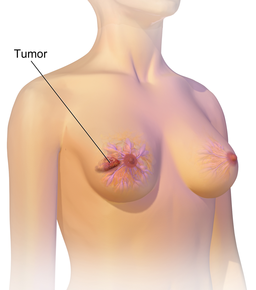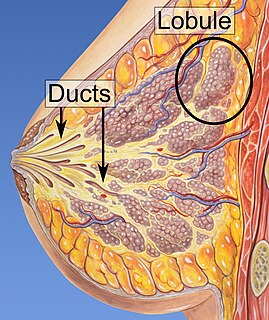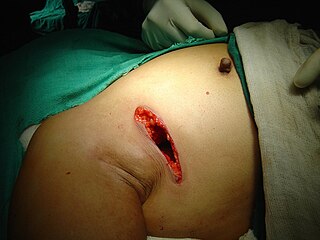Babette Rosmond | |
|---|---|
 Rosmond in 1964 | |
| Born | November 4, 1917 |
| Died | October 23, 1997 (aged 75) |
| Other names | Rosamond Campion |
| Occupation | Author, editor |
Babette Rosmond (November 4, 1917 – October 23, 1997) [1] was an American author.
Babette Rosmond | |
|---|---|
 Rosmond in 1964 | |
| Born | November 4, 1917 |
| Died | October 23, 1997 (aged 75) |
| Other names | Rosamond Campion |
| Occupation | Author, editor |
Babette Rosmond (November 4, 1917 – October 23, 1997) [1] was an American author.
Rosmond sold her first short story to The New Yorker at age seventeen. [2] : 403 She published short fiction of her own and with Leonard M. Lake. [2] : 403 She worked as an editor at the magazine publisher Street & Smith, editing two of their most famous pulp magazines, Doc Savage (from 1944 to 1948) and The Shadow (from 1946 to 1948). [2] : 404 Fellow Street & Smith editor John W. Campbell, the legendary science fiction editor, published Rosmond's sf debut, a story co-written by Lake called "Are You Run-Down, Tired-," in the October 1942 issue of Unknown Worlds [2] : 145, 322 and included her story "One Man's Harp" from the August 1943 issue in From Unknown Worlds (1948), an anthology of the best stories from that magazine. [2] : 146
In 1944, she married lawyer Henry Stone, [2] : 403 [3] brother of Louis Stone of the brokerage firm Haydn Stone, and uncle of director Oliver Stone. They would be married for the rest of her life and they had two children, one of whom is the writer Gene Stone, www.genestone.com, the other is James Stone, founder, CEO and Chairman of The Plymouth Rock Assurance Corporation.
Rosmond set her debut novel, The Dewy Dewy Eyes (1946), in the world of pulp magazine publishing, featuring a heroine fresh out of college and an editor-in-chief who plans a new glossy paper publication. [4] Her second novel, A Party for Grown-Ups (1948), was about an affair between a married doctor and a wealthy divorcee. [5] Lucy, or the Delaware Dialogues (1952) was about infighting amongst the suburban Delaware family. [6] She also wrote The Children: A Comedy for Grown-Ups (1956), The Lawyers (1962), Error Hurled (1976), and Monarch (1978). She published the satirical novel Diary of a Candid Lady (1964) under the name Francis M. Arroway.
She served as fiction editor of Today's Family (from 1952 to 1953) then worked at Better Living (from 1953 to 1956), and Seventeen (from 1957 to 1975). At Seventeen she was fiction editor and edited a series of anthologies of fiction published in the magazine: Seventeen's Stories (1958), Seventeen from Seventeen (1967), Seventeen Book of Prize Stories (1968), and Today's Stories from Seventeen (1971). [2] : 404
With actor Henry Morgan she published a collection of the work of humorist Ring Lardner, Shut Up, He Explained: A Ring Lardner Selection (1962). She also wrote a well-received biography of author and humorist Robert Benchley, whom she had met as a teenager, Robert Benchley: His Life and Good Times (1970). [2] : 403–04
In the 1970s, Rosmond became an important early activist against traditional treatments for breast cancer. [2] : 404 [7] In February 1971 she found an olive-sized lump in her breast and was diagnosed with breast cancer. [2] : 404 [8] [9] : 152–53 The traditional treatment was a radical mastectomy, which required removal of the entire breast as well as surrounding tissue, muscle, and lymph nodes. Two of her friends had that procedure and reported being unhappy with their choice and the resulting side effects. [9] : 152 In response to her refusal to undergo a radical mastectomy, her doctor was condescending and insulting and told her she would be dead within three weeks. [8] [9] : 153 Through an article in McCall's by Dr. William A. Nolen she learned about Dr. George Crile, Jr. at the Cleveland Clinic. [9] : 153 Crile was a leading advocate in the United States for procedures that removed much less material, a simple mastectomy, which only removes the breast, and a lumpectomy, which removes only a small amount of tissue. Then extremely controversial, these treatments are now standard instead of using a radical mastectomy in all cases. Crile performed a successful lumpectomy on Rosmond and her cancer did not reappear until the late 1990s. [8] [9] : 154 She said "I think what I did was the highest level of women's liberation. I said 'No' to a group of doctors who told me, 'You must sign this paper, you don't have to know what it's all about.'" [8]
Under the name Rosamond Campion, she began writing about her experiences. Her article in the February 1972 issue of McCall's, "The Right to Choose", generated more mail than any article in that publication's history. [9] : 141 Some 80 percent of the mail was in support of her decision and many of the letters were from women who asked how to contact Dr. Crile, whose name she had withheld at his request. [9] : 158 She told her story in a book, The Invisible Worm (1972), which takes its title from the poem "The Sick Rose" by William Blake. [9] : 152 She appeared on a number of television programs, including a 1973 episode of The David Susskind Show where she and Crile debated two surgeons and two breast cancer survivors all opposed to her position. [2] : 405 [9] : 165–66 Public activism like Rosamond's caused a drastic transformation in how patients and doctors interacted regarding breast cancer and prompted a growing rejection of more radical procedures in favor of more informed decision making by the patient. [2] : 405 [9] : 141–42
Rosmond died in 1997. Her breast cancer never recurred. [10]

Mastectomy is the medical term for the surgical removal of one or both breasts, partially or completely. A mastectomy is usually carried out to treat breast cancer. In some cases, people believed to be at high risk of breast cancer have the operation as a preventive measure. Alternatively, some people can choose to have a wide local excision, also known as a lumpectomy, an operation in which a small volume of breast tissue containing the tumor and a surrounding margin of healthy tissue is removed to conserve the breast.

Breast cancer is cancer that develops from breast tissue. Signs of breast cancer may include a lump in the breast, a change in breast shape, dimpling of the skin, fluid coming from the nipple, a newly inverted nipple, or a red or scaly patch of skin. In those with distant spread of the disease, there may be bone pain, swollen lymph nodes, shortness of breath, or yellow skin.

Paget's disease of the breast is a type of cancer that outwardly may have the appearance of eczema, with skin changes involving the nipple of the breast. The condition is an uncommon disease accounting for 1 to 4.3% of all breast cancers and was first described by Sir James Paget in 1874.

Sir Geoffrey Langdon Keynes was a British surgeon and author. He began his career as a physician in World War I, before becoming a doctor at St Bartholomew's Hospital in London, where he made notable innovations in the fields of blood transfusion and breast cancer surgery. Keynes was also a publishing scholar and bibliographer of English literature and English medical history, focusing primarily on William Blake and William Harvey.

Invasive carcinoma of no special type (NST) also known as invasive ductal carcinoma or ductal NOS and previously known as invasive ductal carcinoma, not otherwise specified (NOS) is a group of breast cancers that do not have the "specific differentiating features". Those that have these features belong to other types.

Radical mastectomy is a surgical procedure involving the removal of breast, underlying chest muscle, and lymph nodes of the axilla as a treatment for breast cancer. Breast cancer is the most common cancer among women today, and is primarily treated by surgery, particularly during the early twentieth century when the mastectomy was developed with success. However, with the advancement of technology and surgical skills, the extent of mastectomies has been reduced. Less invasive mastectomies are employed today in comparison to those in the past. Nowadays, a combination of radiotherapy and breast conserving mastectomy are employed to optimize treatment.

Giuliana Rancic is an Italian-born American entertainment reporter and television personality. She is a co-anchor of E! News and resides in Chicago and Los Angeles.

Ductal carcinoma in situ (DCIS), also known as intraductal carcinoma, is a pre-cancerous or non-invasive cancerous lesion of the breast. DCIS is classified as Stage 0. It rarely produces symptoms or a breast lump one can feel, typically being detected through screening mammography.

Why I Wore Lipstick To My Mastectomy is a 2006 television film that aired on Lifetime Television and starred Sarah Chalke. It is based on the memoir of the same name, written by Geralyn Lucas. The book and the TV movie depict Geralyn Lucas's fight with breast cancer.
Breast cancer management takes different approaches depending on physical and biological characteristics of the disease, as well as the age, over-all health and personal preferences of the patient. Treatment types can be classified into local therapy and systemic treatment. Local therapy is most efficacious in early stage breast cancer, while systemic therapy is generally justified in advanced and metastatic disease, or in diseases with specific phenotypes.

Breast-conserving surgery (BCS) refers to an operation that aims to remove breast cancer while avoiding a mastectomy. Other terms for this operation include: lumpectomy, wide local excision, segmental resection, tylectomy, and quadrantectomy. BCS has been increasingly accepted as an alternative to mastectomy in specific patients, as it provides tumor removal while maintaining an acceptable cosmetic outcome. This page reviews the history of this operation, important considerations in decision making and patient selection, and the emerging field of oncoplastic breast conservation surgery.
Ling Yuan "Thomas" Dao was a Chinese American physician and specialist in breast cancer, its causes and treatment, who was one of the earliest proponents of minimalist alternatives to radical mastectomy as a treatment option for breast cancer, in addition to advocacy of breast self-examination and mammography as means to detect breast cancer as early as possible.
Rose Rehert Kushner was an American journalist and pioneering advocate for breast cancer patients. She wrote the 1975 book Why Me? What Every Woman Should Know About Breast Cancer to Save Her Life.

Bernard Fisher was an American surgeon and a pioneer in the biology and treatment of breast cancer. He was a native of Pittsburgh. He was Chairman of the National Surgical Adjuvant Breast Project at the University of Pittsburgh School of Medicine. His work established definitively that early-stage breast cancer could be more effectively treated by lumpectomy, in combination with radiation therapy, chemotherapy, and/or hormonal therapy, than by radical mastectomy.

Breast cancer awareness is an effort to raise awareness and reduce the stigma of breast cancer through education on symptoms and treatment. Supporters hope that greater knowledge will lead to earlier detection of breast cancer, which is associated with higher long-term survival rates, and that money raised for breast cancer will produce a reliable, permanent cure.
George Washington "Barney" Crile Jr. was an American surgeon. He was a significant influence on how breast cancer is treated and was a visible and controversial advocate for alternative procedures.
Mildred Vera Peters was a Canadian oncologist and clinical investigator.
Sheila Hodgers was an Irish woman from Dundalk, County Louth, who died of multiple cancers two days after giving birth to her third child. She was denied treatments for her cancer while pregnant because the Catholic ethos of the hospital did not wish to harm the foetus. Her case was publicised in an article in The Irish Times the week before a September 1983 referendum which enshrined the right to life of the foetus in the Constitution of Ireland. The case has been recounted in subsequent pro-choice commentary on abortion in the Republic of Ireland.
Sir Reginald Sydney Murley was a British surgeon who was President of the Royal College of Surgeons.
Eleanor D. Montague was an American radiologist and educator who established breast-conserving therapy in the United States and improved radiation therapy techniques. She became a member of the Texas Women's Hall of Fame in 1993.